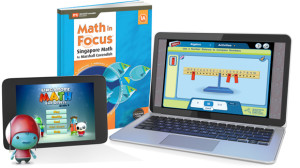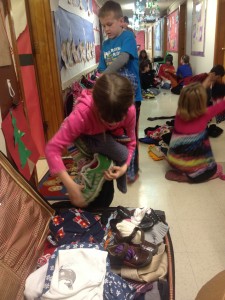
Curriculum
Language Arts – taught in Spanish
Studies have shown that the study of a second language promotes a better understanding of other cultures and a
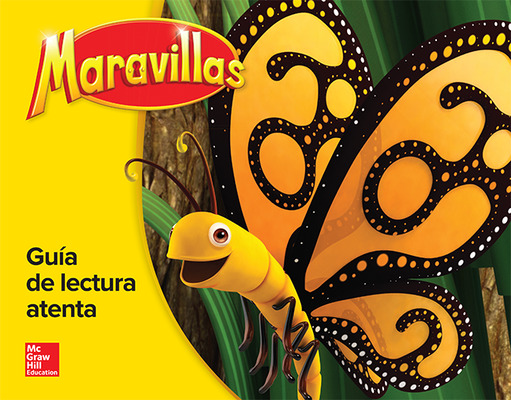 unique perspective on the world. Second language instruction has been shown to improve listening skills, enhance memory, and develop creativity, mental flexibility and higher order thinking. In addition, students who learn a foreign language in elementary school demonstrate higher scores on standardized tests in language arts and math than those who do not.
unique perspective on the world. Second language instruction has been shown to improve listening skills, enhance memory, and develop creativity, mental flexibility and higher order thinking. In addition, students who learn a foreign language in elementary school demonstrate higher scores on standardized tests in language arts and math than those who do not.
Singapore Math – taught in Spanish K-1st, then in English 2nd-5th
In line with the Core Knowledge philosophy, the knowledge that students gain each year builds on the knowledge gained in prior years. Singapore Math stresses students’ foundational skills, teaching concepts verses process. Teaching conceptually lays a foundation, thus enabling all students to progress through advanced mathematics. Students as young as second grade begin learning multiplication and division and are performing simple pictorial algebra by fourth grade. There is a lot of student discussion about solving math problems. Quick mental calculation is stressed.
The Singapore approach teaches math concepts and encourages greater problem solving skills and creative thinking. Singapore Math takes on fewer concepts, about 10 each year, but children are expected to master them. The strong point of Singapore is the way basic concepts are presented, as there is always more than one approach. Singapore Math is an effective mix of drill and practice, word problems and mental calculation instruction connected to all important concepts. Singapore Math addresses the core math curriculum in a a way that better prepares students for higher math.
Social Studies – taught in English
The Core Knowledge Sequence will be used as the basis for the Social Studies curriculum (History & Geography). The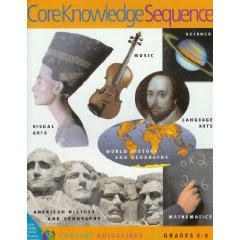 Core Knowledge Sequence provides rich content in both World and American history at each grade level. The History textbook series by Pearson was specifically developed to support the Core Knowledge Sequence for students in grades K-6. The Pearson texts are classical in approach and historical periods serve as the framework for discussion of art, science, literature, philosophy and politics. Key vocabulary is reinforced and students are encouraged to make connections across the disciplines using history as a starting point. Students will possess a solid base of knowledge of both American and World history, understand and be able to discuss the cause and effect of historical events, and demonstrate an understanding of how historical events have influenced the world. The History and Geography content are aligned with the WA Academic Standards.
Core Knowledge Sequence provides rich content in both World and American history at each grade level. The History textbook series by Pearson was specifically developed to support the Core Knowledge Sequence for students in grades K-6. The Pearson texts are classical in approach and historical periods serve as the framework for discussion of art, science, literature, philosophy and politics. Key vocabulary is reinforced and students are encouraged to make connections across the disciplines using history as a starting point. Students will possess a solid base of knowledge of both American and World history, understand and be able to discuss the cause and effect of historical events, and demonstrate an understanding of how historical events have influenced the world. The History and Geography content are aligned with the WA Academic Standards.
Science – taught in English K-1st, then in Spanish 2nd-5th
The Core Knowledge Sequence aligned with the WA Academic Standards will form our Science program. Students take the role of the scientist as they observe the environment around them: asking questions; determining the important issues; and conducting experiments. Science skills and concepts will be taught using experiments, manipulatives, surveys, research, and technology. Students will learn the scientific method in the classroom, community and in the environment.
Music and Art
Music and art are prominently included in the Core Knowledge Sequence and integrated whenever possible with history and literature emphasizing an interdisciplinary approach. Students are expected to gain an appreciation for the interpretation of music and art, issues and viewpoints about music and art, understand the styles of music and art, influences and themes in art and music, and the historical and cultural contexts in which the music and art were generated. Studies have shown the connection between participation in art and music education and success in academics. Participation in music and art education during the formative school years brings countless benefits to each individual throughout life. Music classes at SWS are taught in both Spanish and English.
Physical Education
The Physical Education program encourages personal fitness through individual activities with team games. Participation and good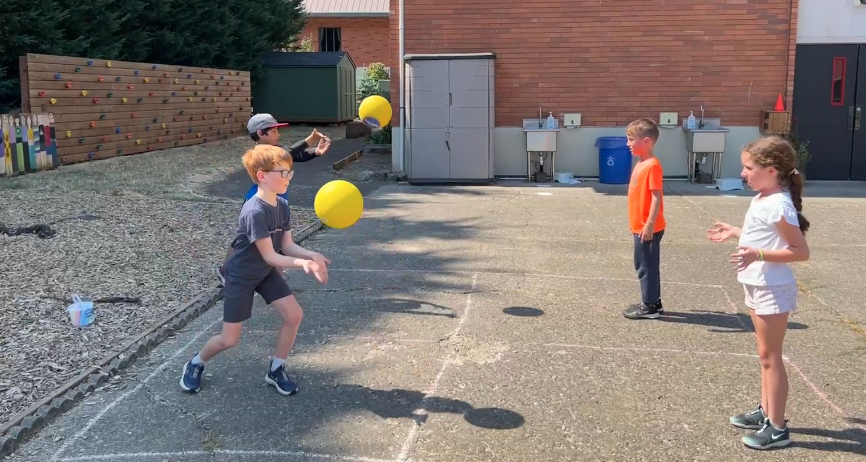 sportsmanship is emphasized. There will also be instruction on health and wellness.
sportsmanship is emphasized. There will also be instruction on health and wellness.
Character Education
Spanish With Sarah’s emphasis on character education is tied to our desire to establish an environment of caring behavior conducive to learning, and is included within the school mission statement: “To provide our families with proven, rigorous and content-rich curriculum integrated with sequential Spanish language instruction. The school will create a results-driven small learning community built around a culture of positive character development and committed parental involvement.”
The research, materials and focus of character education changes each month. A different character theme is the focus for the school and classroom activities. There is a a school wide effort to recognize and integrate the theme throughout the classrooms, hallways, and curriculum.
Character Ed Themes
September: Kindness
October: Teamwork/Trust
November: Gratitude/ Respect
December: Generosity
January: Hard Work/Perseverance
February: Humility
March: Responsibility
April: Environmentalism
May: Global Citizenship (schools from other cultures/goat)
June: Honesty
Health Themes
Students in our Spanish Immersion program have the unique opportunity to not just study a second language; they will live it, experience it, and use it throughout our enriching curriculum, so that it will become part of them.

